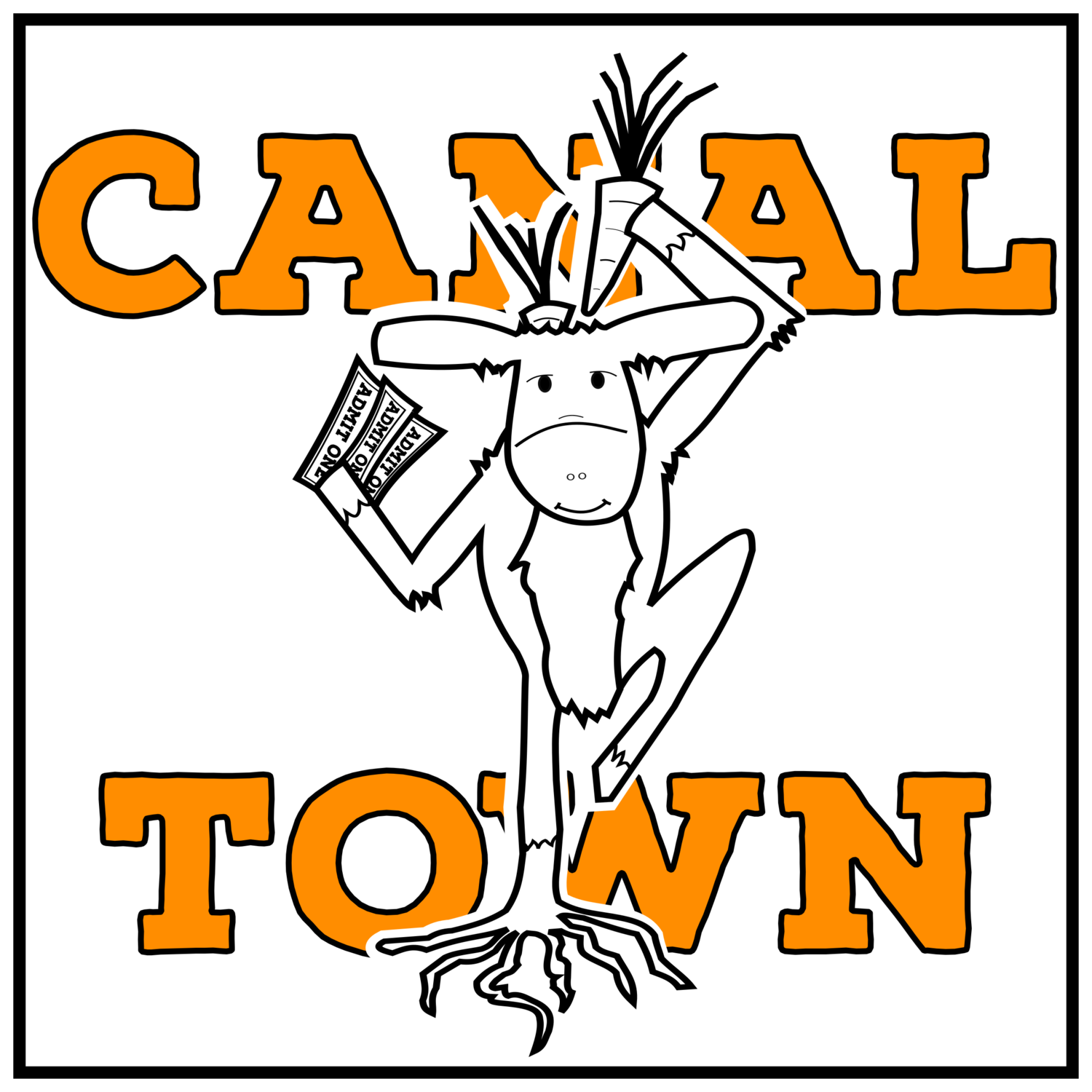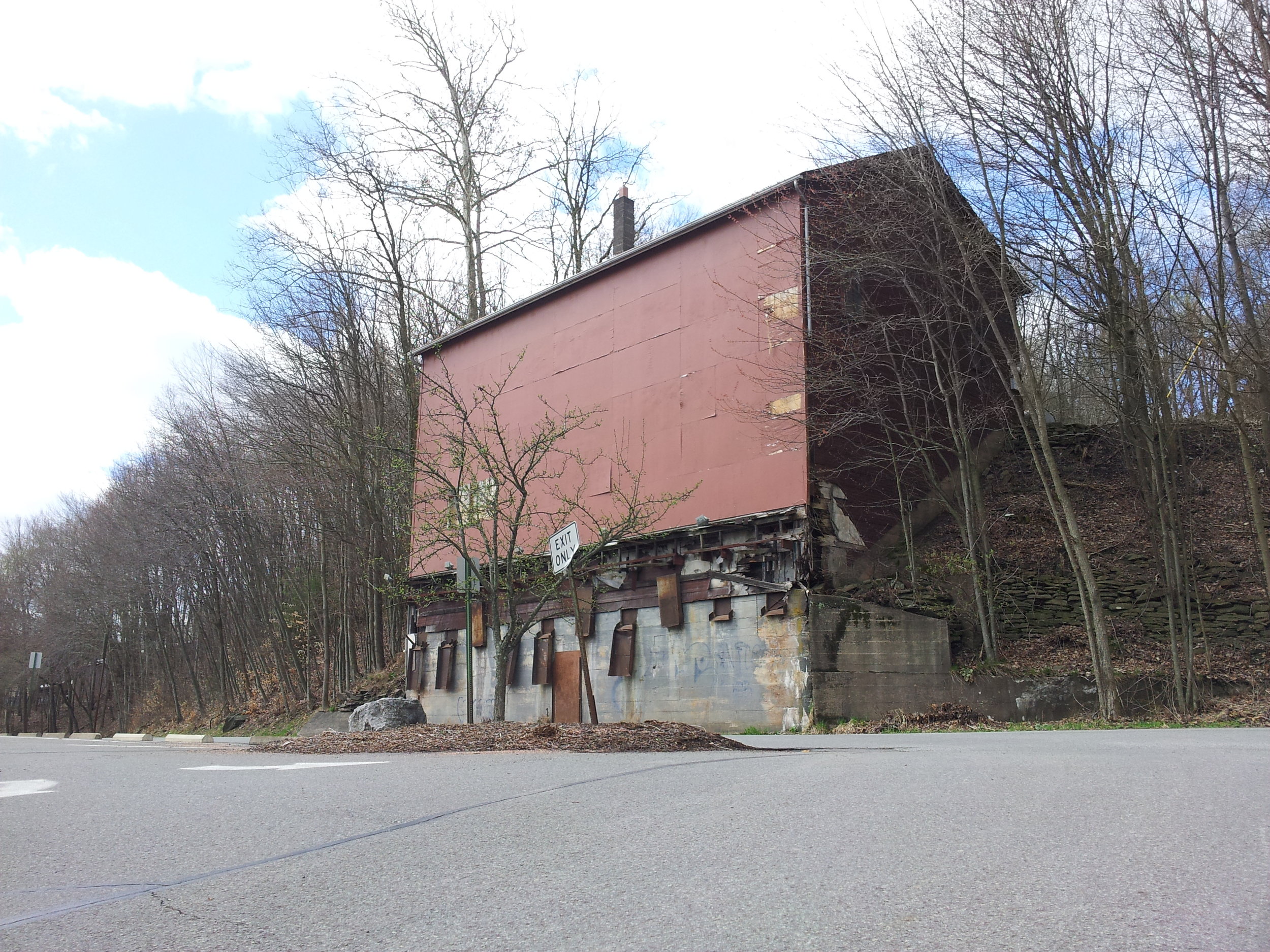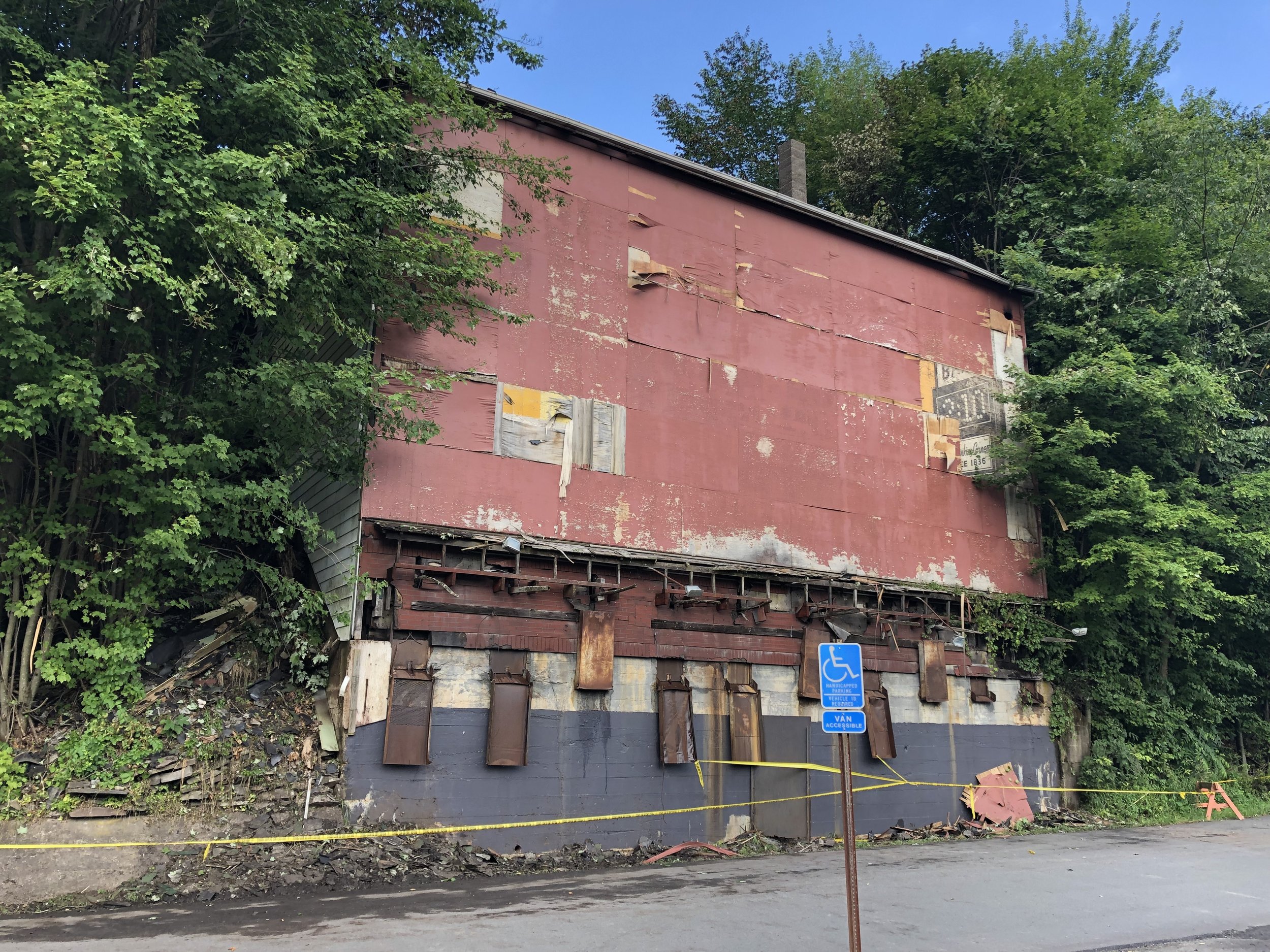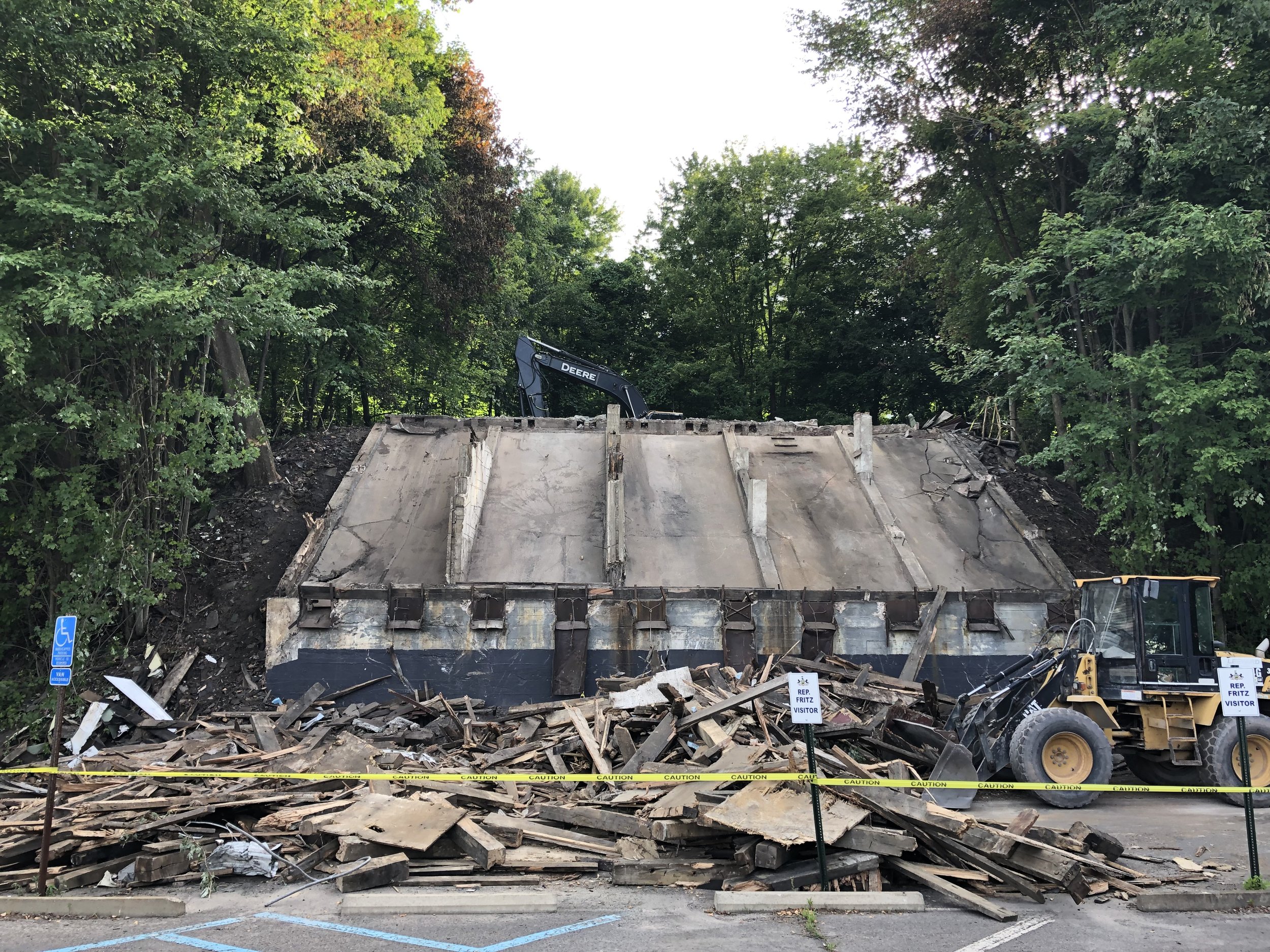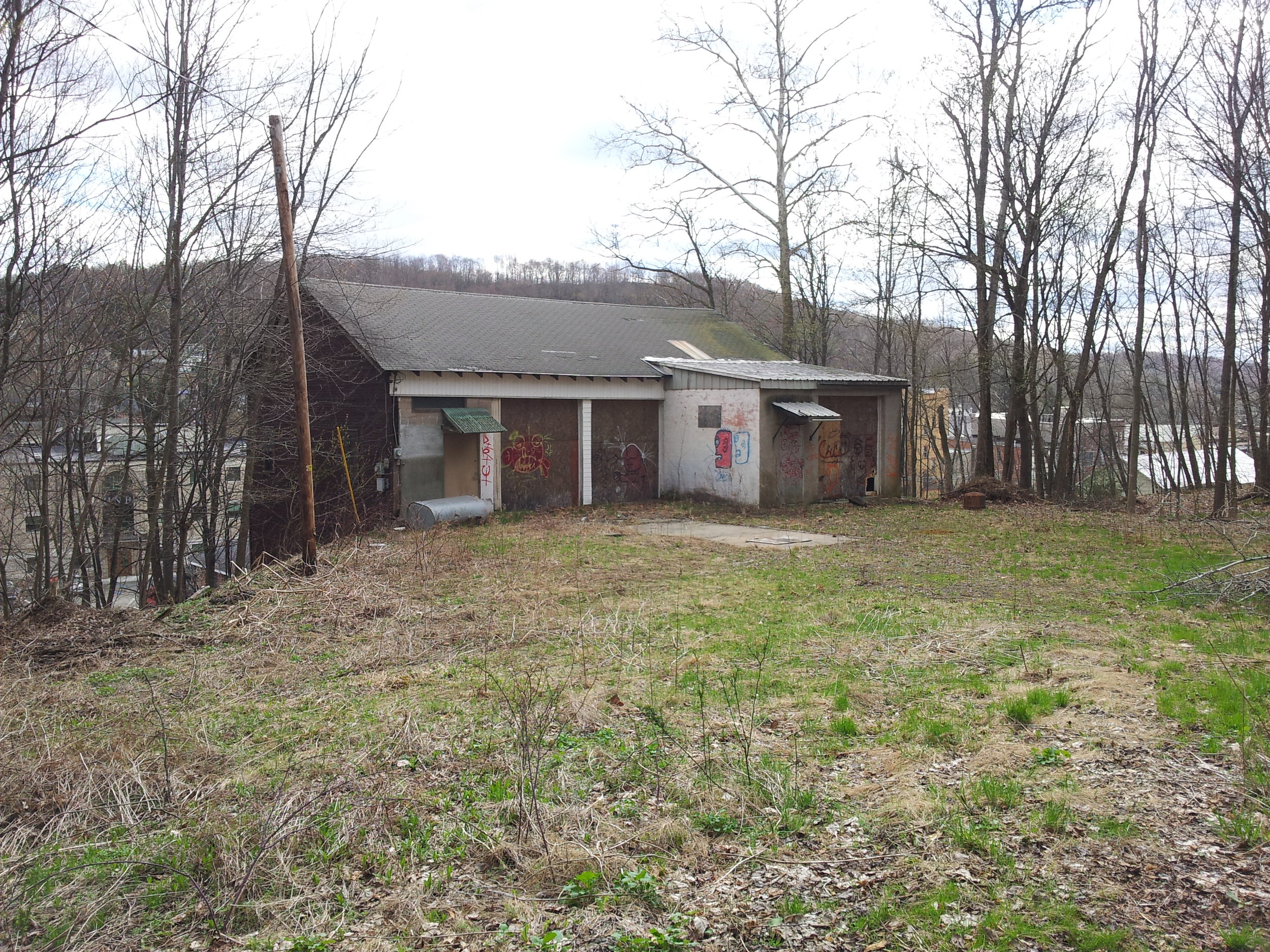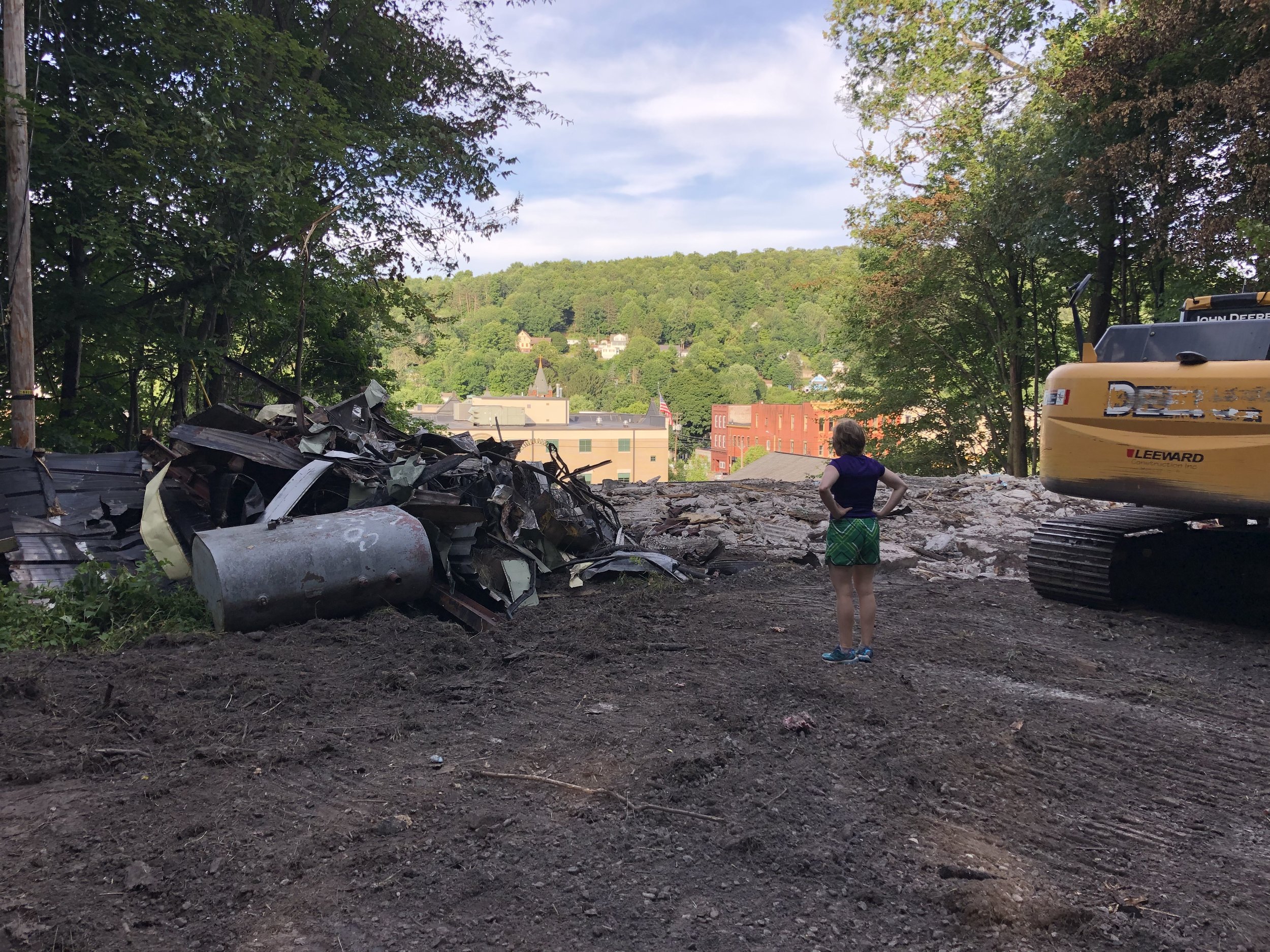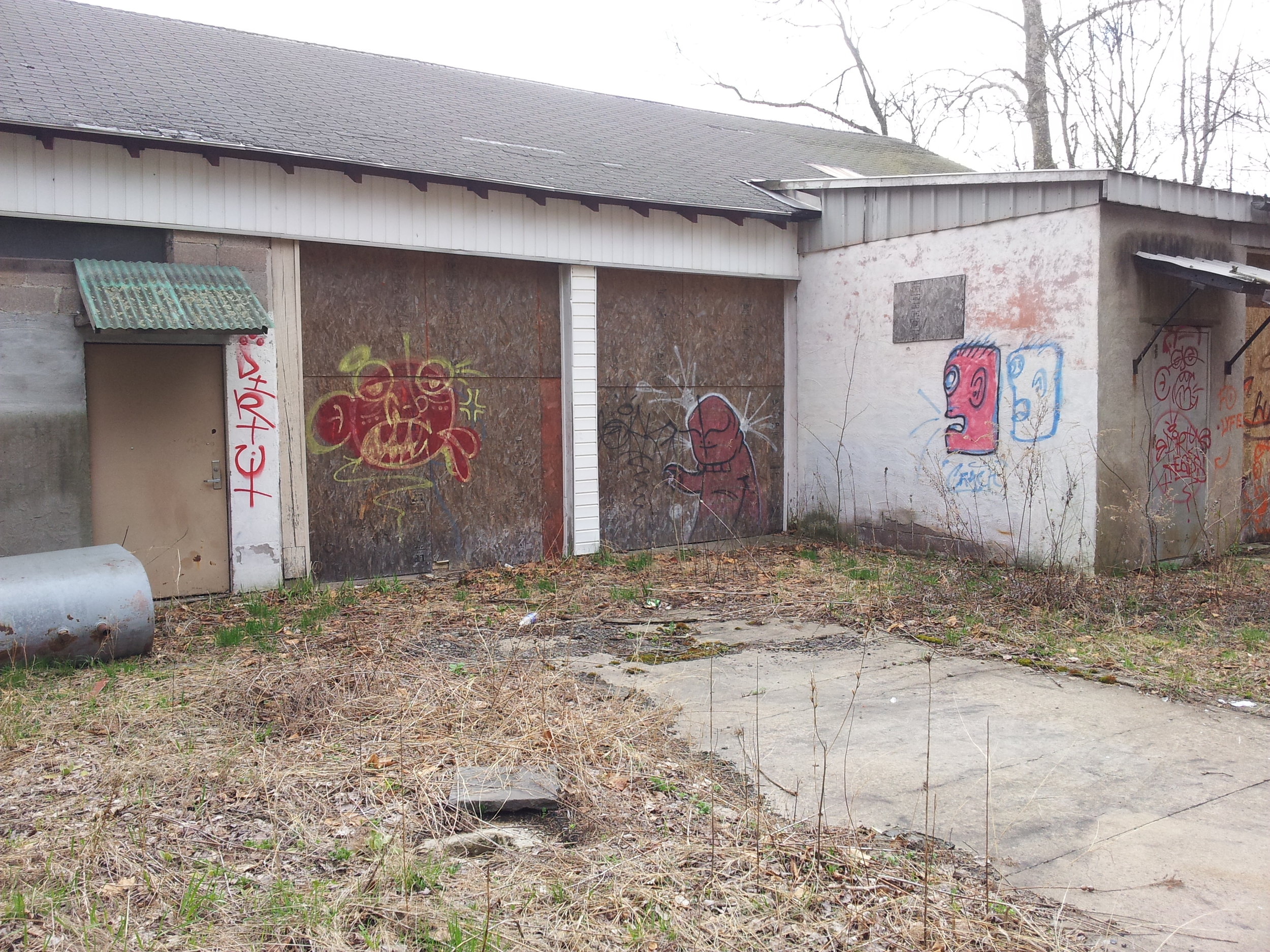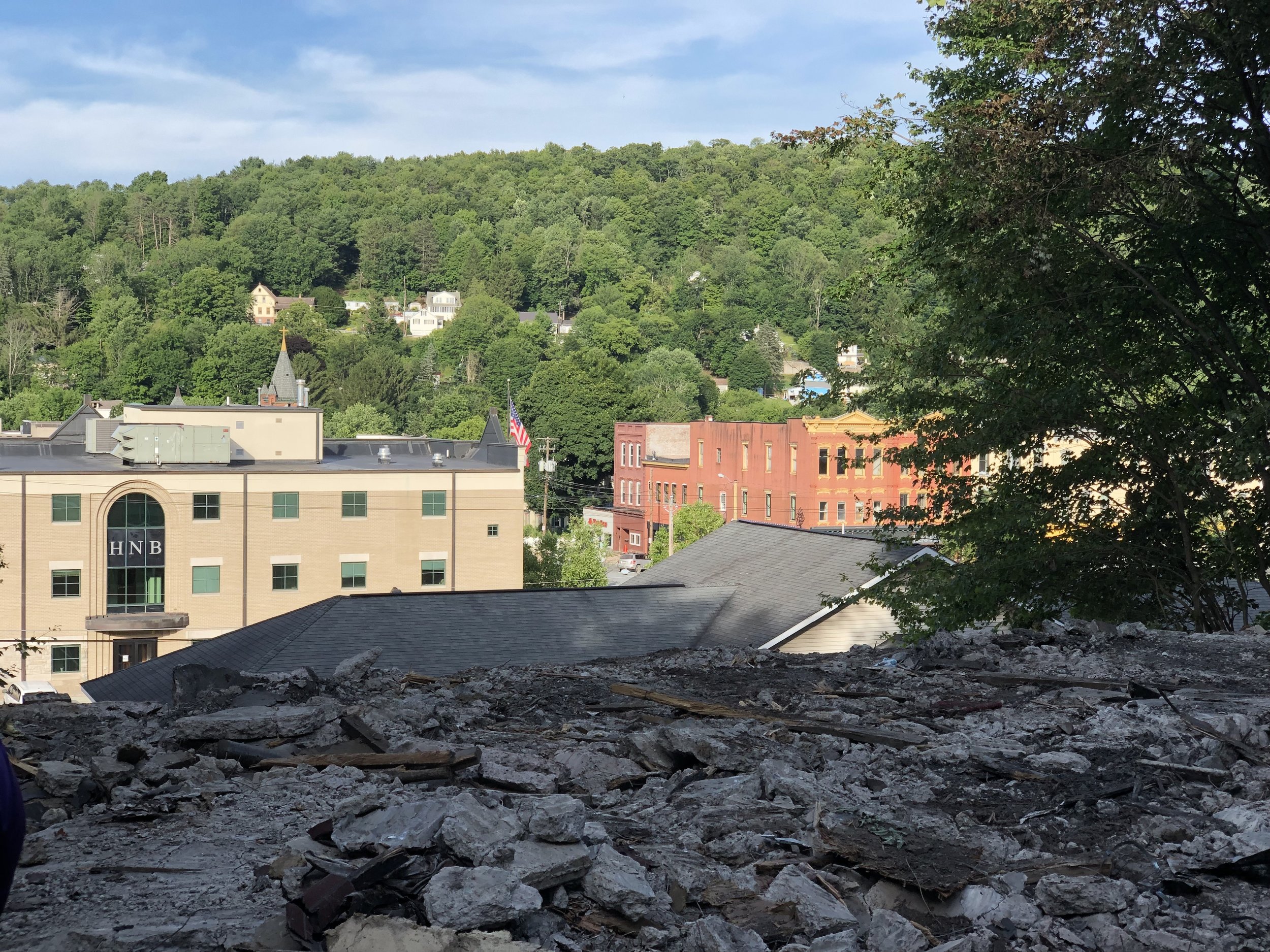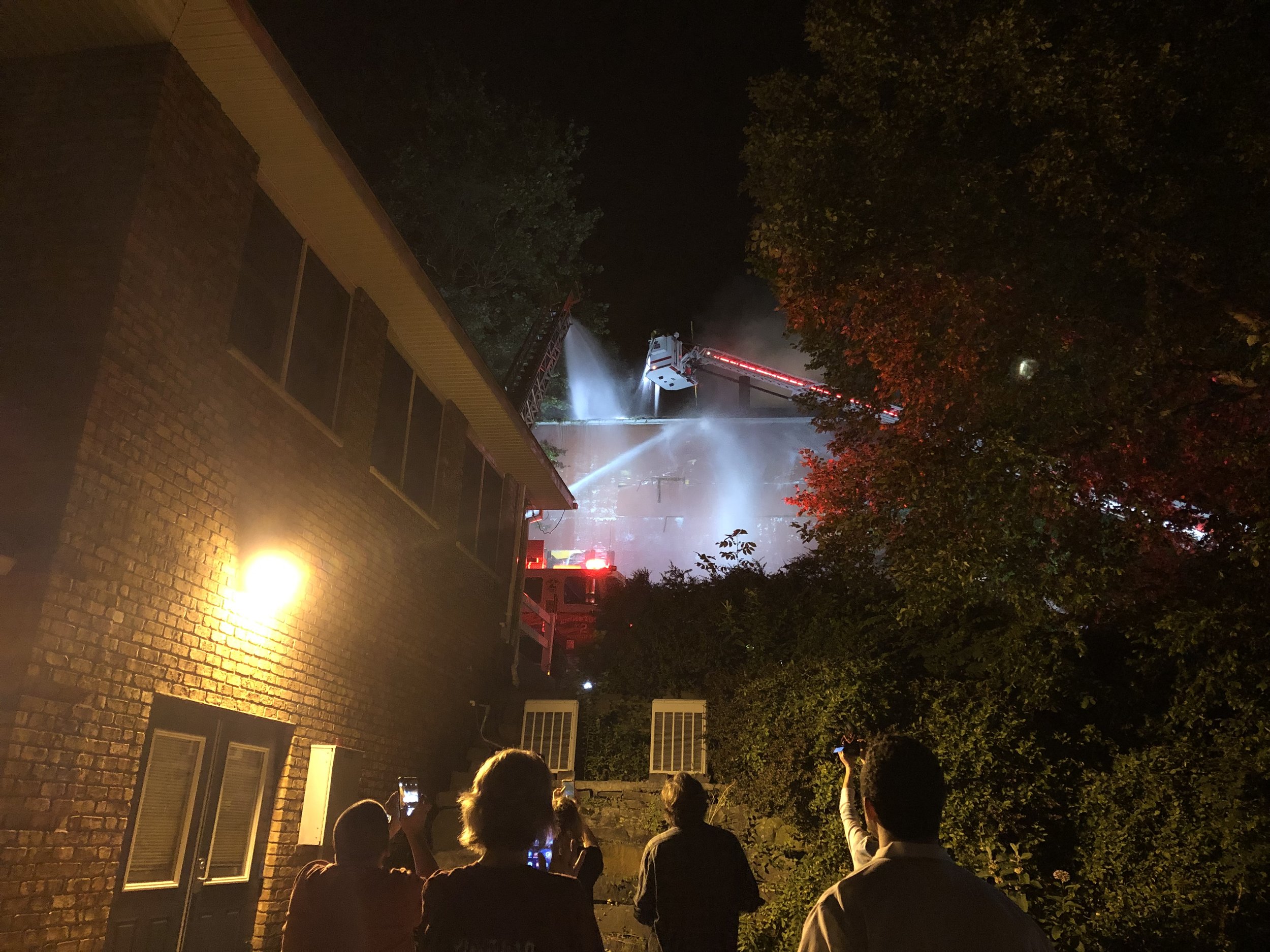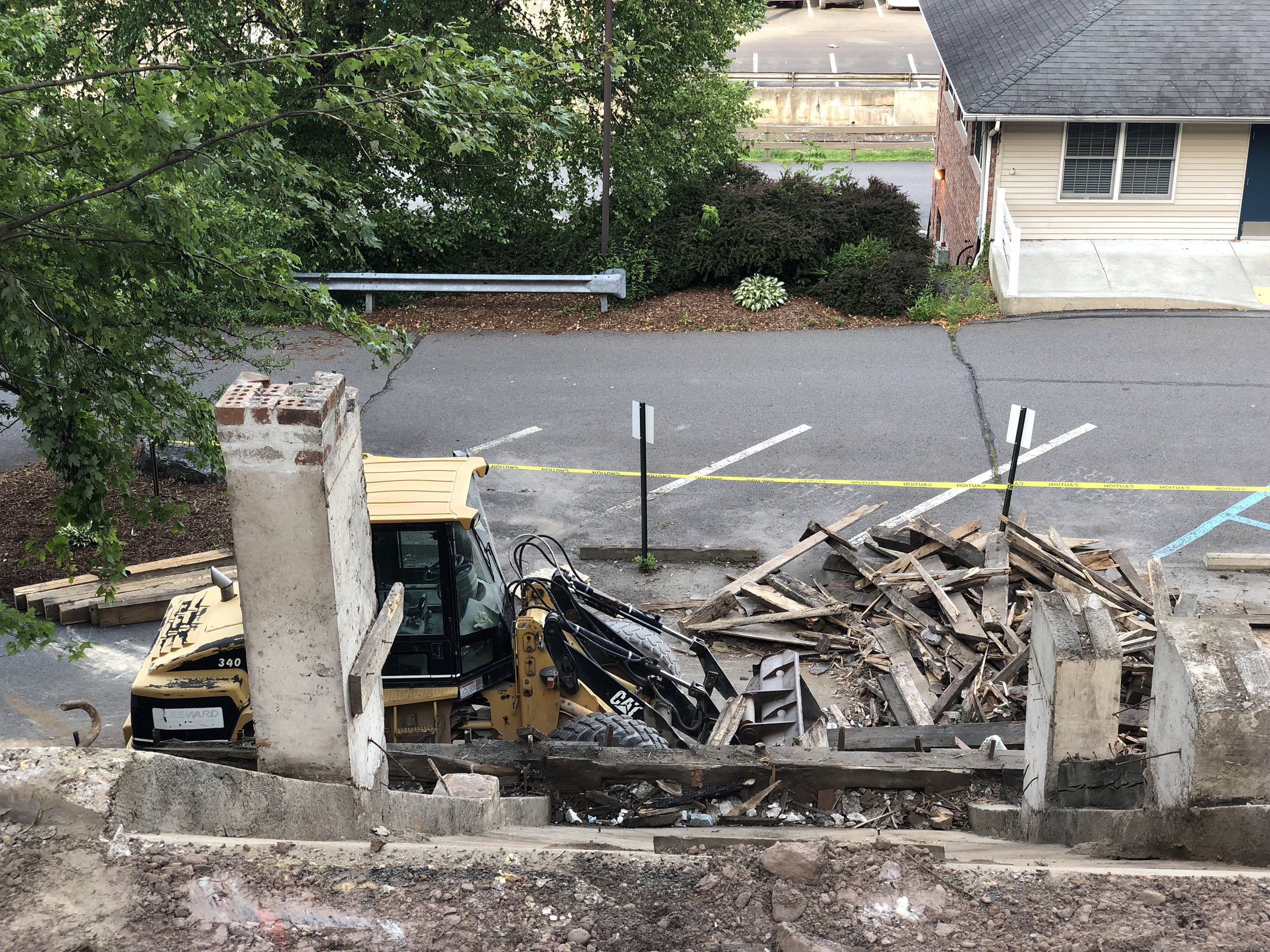Honesdale’s building stock is imbued with past energies. We’re lucky in that way. Much that once was remains on full display, standing like inspirational guideposts within the local landscape. These markers, be they smooth sidewalk stones, ornate home porches, or waning industry outposts share space through time and connect us to multi-generational neighborhoods.
Stewardship of these resources is an active and ongoing process. As extensions of us, our buildings can be equally alive but we must provide life to keep them upright. Older structures can still share value, like the basic shelter and useful space inherent in their form/design. They’re already here and a lot went into their formation so it’s worthwhile and economical to keep them intact.
Everything that went into a space’s creation and everything created within it is a gift. It played host to the past, sits in the present, and remains useful as remix fuel to efficiently support future endeavors. These are existing resources, native to our neighborhoods but utilizing them to their fullest takes a payment of tribute. A small offering of maintenance and use. That’s the responsibility of a building steward and it’s a fair exchange for what’s been given to us.
This is a relationship. Without respectful balance, there can be instability. Something falling or burning or being torn down is a symptom, not singularly caused by accidental or intentional acts, however. One generation unaccounted for could be enough. Roofs caving in, water damage, and errant sparks can all lead to demolition. Vigilance is needed in prevention but less the reactionary kind that imposes stricter control and a blame of confrontational street art. Community assessment that allows for continual conversations is more proactively diligent.
Discussion of questions like…
Why have certain buildings remained unoccupied for decades?
Where do our neighbors without homes find places to sleep?
How does something from the 1940s get neglected then re-imagined as a hub for vibrant graffiti?
Was a secret, forested amphitheater-meadow at dead-ended Olive Street more productively alive with someone camping there than it was when the last business closed?
What happens when a space attracts the “unauthorized” hang-out attention of our next generation?
Can a place be more fruitfully used, via choice over obligation, by “trespassing vandals” than by nobody, as an otherwise abandoned shell?
Might a place lead a more beneficial existence in an “unofficial” capacity, alternative to the example set by a previous, “official” utilization?
… are parts of conversations we like having on a regular basis.
What we create within the community is part of a continuum. It’s not only easier to utilize what we’ve got before building completely anew; it’s more respectful of local character and heritage. With a universe of opportunity in every project, we’re not limiting our creative options when we maximize the use of existing resources.
Why not re-activate under-utilized nooks hidden in plain sight before building something fresh? Why not keep old buildings you can already see the blue sky through alive by developing pathways for them to be sold or gifted away, instead of waiting until they become a pile of debris deeded to somebody with other priorities? Is there room to question what it means to own portions of our landscape and regularly remind each other how important it is to provide care for the same?
What other buildings that currently exist would we miss if they were no longer around? If they’re valuable to us beyond surveyed fence lines and outside what is legally “ours” and “theirs”, are they not part of our shared existence? Would we challenge our notions of what healthy and resilient neighborhoods look like if it meant more brick gets left standing? Or are we, as Peter Hall wonders, “… saddled with the previous generation’s value judgments… ?” We’re open to questioning these things and questioning ourselves in the process.
One way to see preposterous public drawings and phrases is as vandalism. Another, is as under-valued pockets of opportunity being highlighted and potential being realized. Narrowly scanning the horizon for the next batch of spray-painted peeni (or penises) and reporting skateboarding movements to a neighborhood watch feels like focusing on a single, back building wall, while blinding ourselves to the rest of town. We think there are more holistic concerns than the crimes investigated in American Vandal.
There can be cycles of death and rebirth in an approximately 75-year, structural life. After decades of vacancy, what appears to be a disrespectful paint job may in fact be the opposite; the acceptance of a gifted guidepost as a place worth being in again. Cherishing a beautiful space can come in many forms. Rediscovering potential beneath decay is celebrated when it’s more thoroughly understood. Is a vacant building getting tagged worse than that same building staying unnoticed and eventually crumbling? Perhaps new color additions are natural signs of a living community and neighborhood reclamation.
Olive Street, End Meadow - April, 2013
